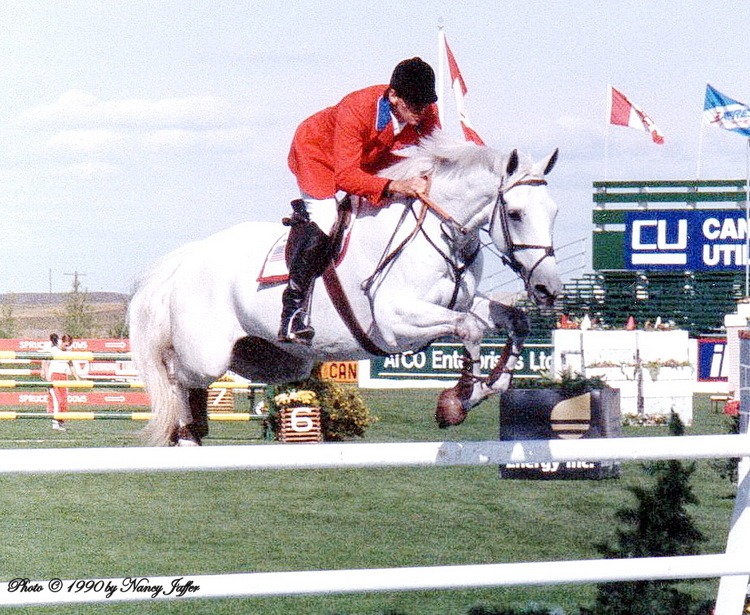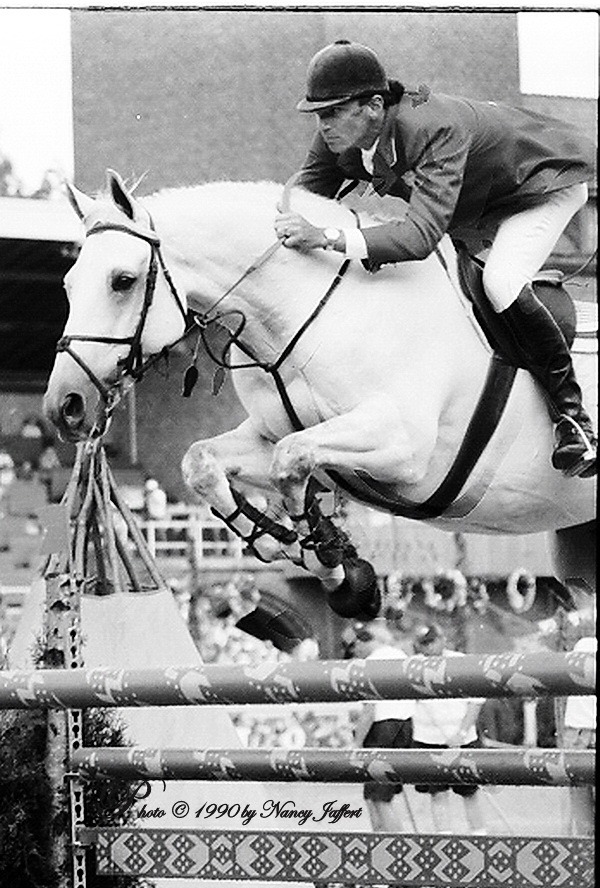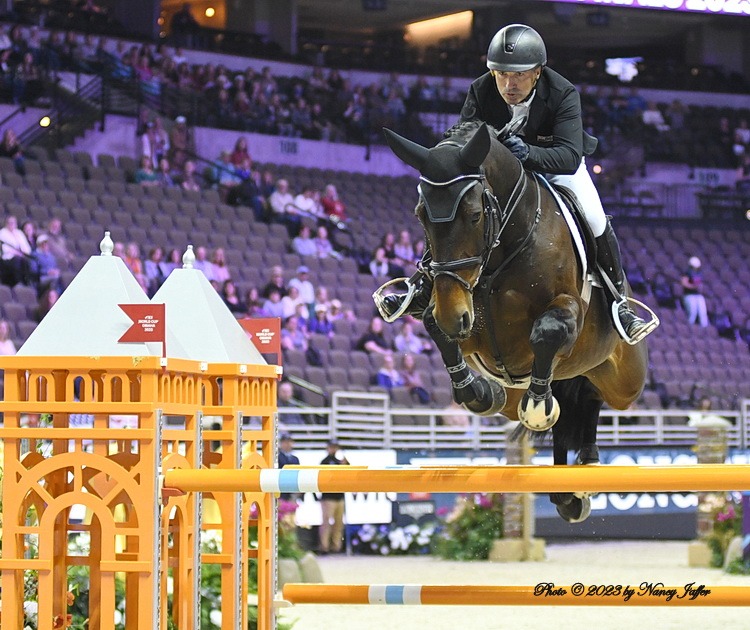They were a legendary pair, Greg Best and Gem Twist. In 1988, when Greg was only 24 years old, he and the sensational grey thoroughbred earned the individual show jumping silver at the Seoul Olympics and were part of the silver medal team there. Two years later at the world championships, Gem was named Best Horse.
Congenial and Ivy League-educated, Greg had star quality; so did Gem, a brilliant grey thoroughbred owned by Michael Golden and trained by six-time Olympian Frank Chapot.
But a bad shoulder injury Greg sustained in a 1992 fall from Gem ended the famous partnership. Gem went on to other riders and Greg eventually moved to New Zealand, becoming a citizen 25 years ago. He rode there, then coached (doing that job for the country’s 2004 Olympic team) and also returned to America to teach.
Mostly, however, he became a farmer on 1,000 acres with his wife, Kim. At one stage, they were doing some breeding and had 49 horses. At this point, though, they own only five horses and have downsized to 80 acres that’s home to cattle and alfalfa, where Greg is the farmer and “the Mr. Fixit guy.”
And now, at age 58, Greg is moving away from his involvement with the world of horses.
Why would someone who has such a connection with the industry do that?
“My kids don’t ride,” he explained about his son, 10, and daughter, 7. He is focused on parenting, noting, “You don’t get a second chance at it, to do the job the way that it should be done; this is the time where they need you more than ever.
“I think my wife is not far away from not wanting to ride as well. So it’s time to turn an eye to the kids and be a cricket and gymnastics supporter and just be the best dad I can be and the best husband I can be and move on to the next phase of life,” he told me when we visited during the Longines FEI World Cup Finals in Omaha this month.
The question is, what does that next phase involve?
“I’m not sure,” he said, as the most famous riders in what had been his sport worked their mounts a few feet from us in the warm-up arena at the CHI Health Center facility.
“The good thing is, you move on from the horses, and then there’s this whole other world out there that’s much bigger than this little microcosm that we intend to focus too much on,” he observed.
When I asked if he misses his deep involvement with horses and showing, he was quick to answer, “No. Even being here doesn’t make me think,`Oh gosh, I wish I could have another go at it.'”
He paused for a moment and then mused, “It’s interesting. You get to a certain point in your thinking where you realize your interest in it and your relevance in it has gone. And the interest goes first. Once the interest goes, you’re around it less and less, and then you start to realize your relevance is limited as well. That’s where I am right now. The enthusiasm is probably more about my son’s cricket game on Saturday afternoon, and I won’t be there.”
Greg came to the World Cup Finals to help fellow Kiwi Phillip Steiner, who went to the Netherlands earlier this year to train with his 11-year-old mare, Cassina Dior (DioradoXCassina I), bred in New Zealand by Pip McCarroll. Steiner’s aim is to be part of the New Zealand team at the Paris Olympics next year and the World Cup was the first major step on that journey.
As Greg explained, he has been friends with the Steiner family for a long time.

Phillip Steiner and Greg Best at the World Cup Finals.( Photo © 2023 by Nancy Jaffer)
“I’ve helped him with this horse quite a bit. When he decided he wanted to come here, he said, `There’s one guy I want at my side,’ and I said I’d be honored to come and give him a hand. His wife, Sally, had her crack at the top level 15 years ago. This is his horse of a lifetime.”
Although Phillip has been away from the top level of the sport for quite a while, he has worked with some big names over his lifetime. He spent two summers in the U.S. during the early 1990s with Joe Fargis and Conrad Homfeld, while leasing a horse from Debbie Dolan. Later in the decade, he worked with Swiss horse dealer Max Hauri and then Swiss Olympic team silver medalist Lesley McNaught. While in Switzerland, he got to know Pius Schwizer and Steve Guerdat, world-class riders when they were at the beginning of their careers.
Greg appreciates what Phillip is doing and understands why he left New Zealand on his quest.
“He has a trucking firm back there and a farm. He’s putting all of that on hold. He’s at the very beginning of this whole process. The World Cup finals is a huge ask for him to come and do first up.”
For Phillip, 51, the second course at the World Cup “was probably the biggest track I’ve jumped in my career.” He noted his mare, known as Dolly, is inexperienced, but brave.
“She’s got so much potential, she goes out and jumps weird jumps like the wall (an airy obstacle with pillars beneath a solid top) that a lot of horses would look at. I’ve really got to trust her ability. I’m really proud of her.”
Phillip finished 24th in that competition and qualified for the third leg of the Cup. He finished the finals in 30th place among 40 participants.
In the daunting triple combination on the third day, the mare had a knockdown at the first element, an oxer, then stopped at the second, a vertical. After Greg signaled from the Kiss and Cry stand (where coaches and families watch competitors) that Phillip should continue, the rider and his mare tackled the triple again and went on to finish the course.
Will Greg continue to help his friend?
“We’ll see how it all goes,” he said.
“I would imagine once he gets back to Europe, he’ll find his new friends and new helpers over there.”
And as Greg pointed out, there’s a chance that under the Olympic qualifying process, New Zealand might not make it to the Games. But he noted that Phillip, “didn’t want to miss out on an opportunity to do something like this.” And then he added, “I get it.”






